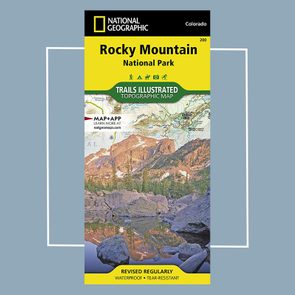7 Best Hiking Socks to Keep Your Feet Comfy and Pain Free
Updated: Sep. 02, 2021
High-quality hiking socks can make a big difference in keeping your feet comfy and pain free. Here are some tips to help you find the best socks for your next hike.
Our editors and experts handpick every product we feature. We may earn a commission from your purchases.
Hiking socks 101
Footwear is one of the most important factors to consider before any hiking trip, whether it’s a quick hike in a local park or days of backpacking through remote wilderness.
Although many people buy special boots or shoes to protect their feet while hiking, another aspect is often more of an afterthought: hiking socks.
Socks may not take a beating quite as much as your shoes do, but they are still a key part of hiking gear that most people need.
They provide extra cushioning, warmth, and protection, and they play an under-appreciated role in moisture control, absorbing sweat from your feet, along with any other water that gets into your shoe.
If you’re planning to hike, here is a quick guide to helpful criteria for choosing the right hiking socks. Plus, some examples of hiking socks that meet our experts’ recommendations for hiking.
What to consider when buying hiking socks
At first, almost any kind of socks might seem suitable for hiking. Why not just wear the same cotton socks you wear on other days?
That could be fine if you’re only hiking a few miles in temperate conditions, but any shortcomings in your socks may begin to grow exponentially worse the farther you hike, especially in bad weather.
Fabric
One of the main factors to consider for hiking socks is the material, says Kate Van Waes, executive director for the American Hiking Society.
Wet feet are more prone to problems like blisters and athlete’s foot, according to the Journal of Tissue Viability. So fabrics that quickly dispose of moisture are generally better.
Try to avoid cotton socks for hiking if you can, Van Waes suggests, since water tends to linger longer in cotton than in some other fabrics.
“I go with wool,” she says. “It stays warm even when wet, which is good if it’s going to get cold at night, or if you’re hiking in the fall and it gets chilly.”
Waes also likes that wool dries out faster, and it wears well.
“You could have a pair of wool socks for 15 years,” she says. “They wear well, wash well, [and] don’t get smelly. Just because of their natural properties, you’re less likely to get athlete’s foot.”
Merino wool, in particular, is prized among hikers, thanks to a reputation for regulating moisture, temperature, and odor. Hiking socks are now commonly made from a blend of materials, often pairing merino wool with nylon or polyester.
Athletic or technical socks that rely at least partly on synthetic materials for temperature and moisture control seem to help reduce the risk of blisters more than cotton socks do, according to a 2019 study published in the International Journal of Environmental Research and Public Health, even for short, low-difficulty hikes.
Some people are sensitive to wool, Van Waes notes, and many other materials can also work well for hiking—even cotton.
“If you’re just going for a shorter day hike or an urban hike, and if cotton socks are what you’ve got, go for it,” Van Waes says.
Quantity
Cotton socks could be useful on some longer hikes, too. Just pack an extra pair or two of socks, if possible, which is a good idea in general, regardless of fabric.
“It’s generally good to have extra socks, because you never know if it’s going to start raining,” Van Waes says. “In a lot of places it thunderstorms fairly regularly in the afternoon in the summer. Socks hardly weigh anything, and putting on a pair of dry socks can save you from blisters.”
Cushioning
More cushioning in your socks can help protect your feet on long, strenuous hikes.
It also tends to add warmth, which is great for sleeping or hiking in cold weather, but might be unpleasant on a sunbaked trail in late summer.
It’s smart to have some cushioning in your socks for high-mileage hikes, but remember to factor in the weather as well as distance.
Fit
Make sure your socks fit snugly, but not too tightly, before you wear them hiking.
A loose-fitting sock could slip and bunch up, potentially causing discomfort or contributing to friction blisters.
Height
Your sock should come up at least as high as the top of your shoe.
Low-profile running socks have become more popular in recent years, Van Waes notes, and they can work well in many situations.
If you’re wearing hiking boots with high cuffs, however, taller socks can help prevent abrasion from the boots.
“The height of your sock should be determined by the height of your shoe,” Van Waes says. “You don’t want the top of the shoe to be rubbing against you.”
Hiking socks
Now that you know what makes a good hiking sock, here are a few examples of popular hiking socks that meet the criteria for high performance and comfort.

Smartwool Trekking Crew Socks
Smartwool is a powerhouse brand for hiking socks, having built a reputation for justifying its higher prices with high-performing, long-lasting socks. These heavily cushioned socks are designed to buffer your feet from the rigors of long-distance treks with a heavy backpack.
They boast a merino wool content of 80 percent, along with 19 percent nylon and 1 percent spandex, and have a reinforced sole for added padding and durability.

People Socks Below Zero Crew Socks
Brooklyn-based People Socks uses merino wool from New Zealand, which the company argues is higher-quality than American merino wool, but otherwise the socks themselves are entirely made in the United States.
The Below Zero socks feature 71 percent merino wool, 21 percent nylon, 7 percent polyester, and 1 percent spandex, with additional support for the heel, toe, and arch.
They are designed for long-duration wearing, with a medium thickness that offers support, comfort, and warmth along with moisture wicking and breathability.

Alvada Winter Thermal Boot Socks
If you want to maximize comfort for your feet, even on a long or difficult hike in bad weather, you could do worse than these robust socks from Alvada.
Made with 80 percent merino wool, 15 percent polyester, 4 percent nylon, and 1 percent spandex, they feature ample cushioning in the footbed and a soft, fuzzy interior for comfort and support.
Due to the high content of merino wool, they also offer its inherent benefits of temperature regulation and moisture control. These socks are designed to withstand winter weather, so they may get a little stuffy in summer, but the company boasts of their suitability for a wide range of weather conditions.
(Here’s the best winter walking and hiking gear.)

Meriwool Midweight Hiking Socks
These unisex socks from California-based Meriwool are 75 percent merino wool, all sourced from Australia.
Like many high-performance hiking socks with a mix of wool and synthetic fibers, they offer arch support, a reinforced toe and heel, and a snug fit to resist bunching and slipping. And thanks to the natural properties of merino wool, they also help regulate temperature and reduce moisture that can lead to blisters.

Danish Endurance Cushioned Hiking Socks
These all-season hiking socks from Danish Endurance are made with merino wool, albeit less than many other socks in this list. They feature 30 percent merino wool, 36 percent nylon, 33 percent acrylic, and 1 percent spandex, according to the Denmark-based company’s website.
This lets them still offer some of the thermoregulation and moisture-wicking benefits of merino wool, but with additional airflow and ventilation for more comfort in a wider range of weather, making them well-suited for hiking in winter or summer.

Merrell Cushioned Performance Hiker Socks
Widely known for its hiking shoes, Merrell has also partnered with K. Bell Socks to produce hiking socks under its brand. These cushioned and reinforced socks are 25 percent merino wool, along with 60 percent acrylic fibers, 13 percent nylon, and 2 percent spandex.
They provide lots of cushioning and arch support as well as “heavyweight warmth” for winter hiking, according to Merrell, but also enough breathability for warmer weather.

Innotree Full Cushion Hiking Socks
This list focuses mainly on hiking socks that contain merino wool, due to its unique foot-protecting properties, but as Van Waes points out, some people have skin sensitivities that rule out wool socks.
There are many good options for wool-free hiking socks, often with a mix of synthetic fibers and cotton.
Although wool outperforms cotton in key areas like heat regulation and moisture control, cotton can still work for hiking socks, especially when blended with synthetic fibers. These thick, durable socks from Innotree are 50 percent cotton, 45 percent nylon, and 5 percent spandex, with high elasticity and breathability as well as ample cushioning for arduous hikes.



















